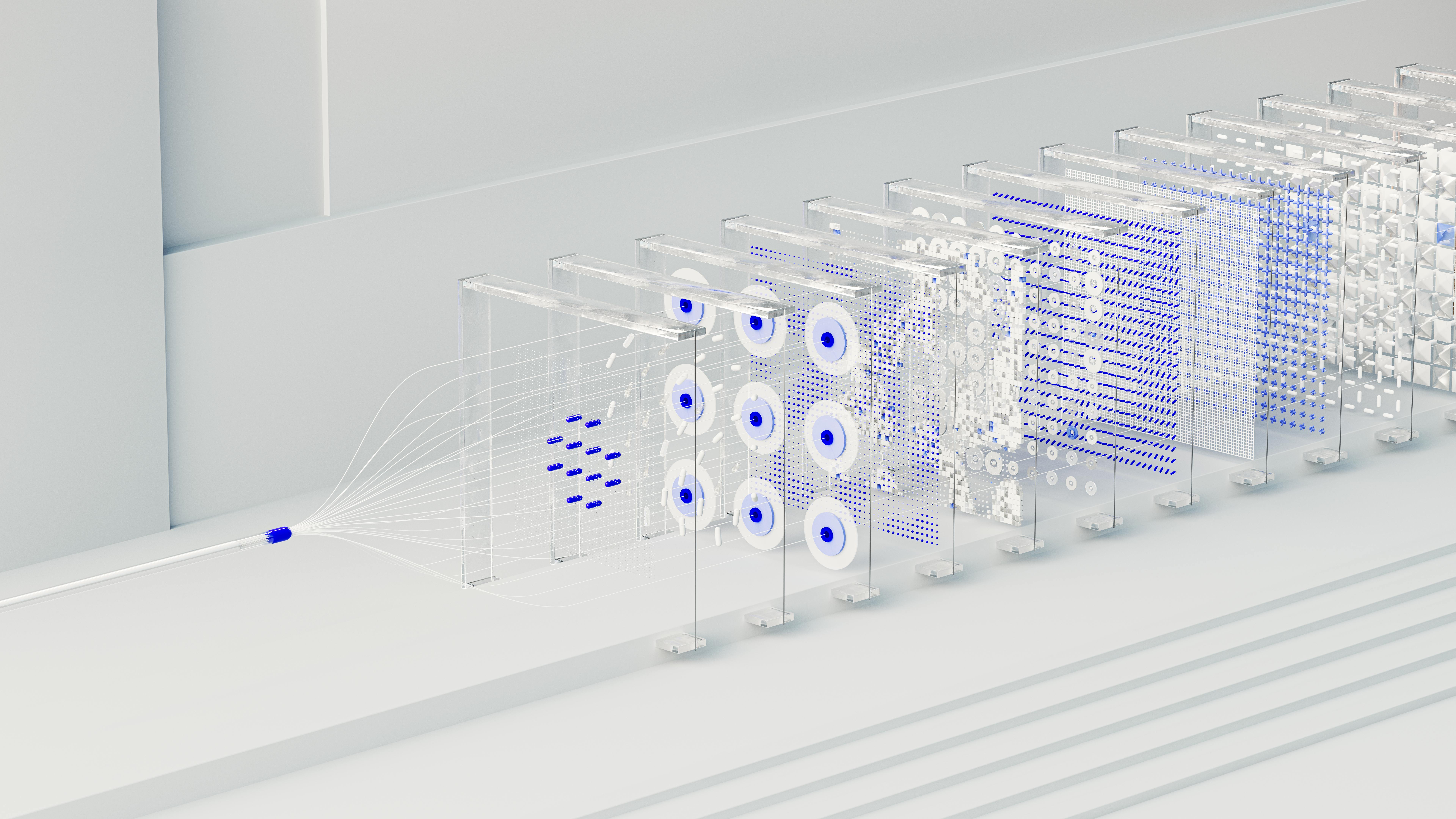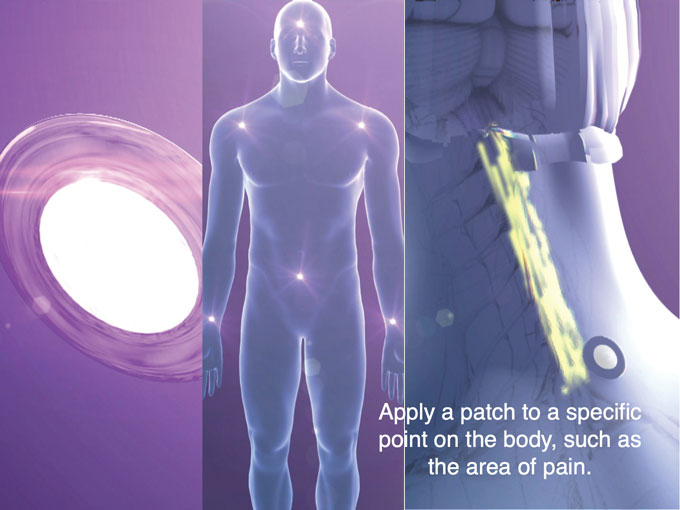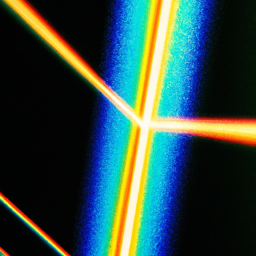In this article, you will explore the fascinating world of phototherapy and its impact on cellular function. Discover the intricate mechanisms behind phototherapy and how it can positively influence the functioning of our cells. Gain insights into the potential applications of this therapy in various fields, from healing wounds to treating certain medical conditions. Prepare to be amazed as we delve into the depths of phototherapy and its profound effects on cellular function.

Overview of Phototherapy
Definition of Phototherapy
Phototherapy refers to the use of light to stimulate cellular function and promote the healing process in the body. This therapeutic approach has been utilized for centuries and continues to be an important tool in modern medicine. By exposing the body or specific areas of the body to different types of light, phototherapy aims to improve overall health and well-being.
Brief History
The history of phototherapy dates back to ancient times when sunlight was recognized for its healing properties. Ancient cultures, such as the Egyptians, Greeks, and Romans, used sunlight to treat various ailments, including skin disorders and wounds. However, it was not until the 20th century that phototherapy became more scientifically understood and widely used in medical practice. With advancements in technology, researchers and healthcare professionals uncovered the mechanisms through which light affects cellular function, leading to the development of targeted phototherapy techniques.
Types of Phototherapy
There are several types of phototherapy that can be used depending on the desired outcome and the specific condition being treated. Some common forms of phototherapy include ultraviolet (UV) phototherapy, laser therapy, and LED (light-emitting diode) therapy. UV phototherapy involves the use of specific wavelengths of UV light to treat conditions such as psoriasis, vitiligo, and eczema. Laser therapy utilizes concentrated light beams to target precise areas of the body for various medical and cosmetic purposes. LED therapy, on the other hand, uses low-intensity light to stimulate cellular activity and treat a wide range of conditions, including acne, aging skin, and chronic pain.
Cellular Function and Significance
Understanding Cellular Function
Cells are the building blocks of life and play a crucial role in maintaining the overall health and well-being of the body. Each cell is responsible for performing specific functions, such as energy production, DNA replication, and communication with other cells. Understanding cellular function is essential as it provides insights into how phototherapy affects the body at the most basic level. By targeting cellular mechanisms, phototherapy has the potential to enhance cellular function and promote overall health.
Importance for Overall Health
Healthy cellular function is vital for the proper functioning of the body as a whole. Cells produce energy in the form of ATP (adenosine triphosphate), which is necessary for various physiological processes, including muscle contraction, nerve transmission, and metabolism. Additionally, cells are involved in the repair and regeneration of tissues, maintaining the integrity of the immune system, and regulating inflammatory responses. Any disruption in cellular function can have profound effects on overall health and well-being.
Factors Affecting Cellular Function
Several factors can affect cellular function, including environmental toxins, aging, oxidative stress, and genetic predisposition. Environmental toxins, such as air pollution, chemical exposure, and radiation, can damage cellular DNA and impair normal cellular processes. Aging is also known to impact cellular function, as cells become less efficient in energy production and repair mechanisms. Oxidative stress, which occurs due to an imbalance between the production of reactive oxygen species (ROS) and the antioxidant defense system, can lead to cellular damage and dysfunction. Genetic predisposition also plays a role in cellular function, as certain genetic variations can affect how cells respond to external stimuli and influences.
Mechanisms of Phototherapy
Absorption of Light by Cells
One of the fundamental mechanisms of phototherapy is the absorption of light by cells. Different wavelengths of light interact with specific molecules within cells, including chromophores, proteins, and enzymes. This interaction triggers a series of biochemical reactions and cellular responses, which ultimately leads to changes in cellular function. For example, red and near-infrared light have been shown to be absorbed by mitochondrial chromophores, promoting ATP production and stimulating cellular metabolism.
Generation of Reactive Oxygen Species (ROS)
Another mechanism of phototherapy involves the generation of reactive oxygen species (ROS). Light can trigger the production of ROS within cells, which act as signaling molecules and regulate various cellular processes. Low levels of ROS can stimulate cellular signaling pathways, promoting cell proliferation, migration, and tissue repair. However, excessive production of ROS can lead to oxidative stress and cellular damage. Phototherapy aims to strike a balance between ROS production and antioxidant defense, ensuring optimal cellular function.
Activation of Cellular Signaling Pathways
Phototherapy has the ability to activate specific cellular signaling pathways, leading to a cascade of events within cells. For instance, red and near-infrared light have been found to activate the MAPK/ERK and PI3K/Akt signaling pathways, which are involved in cell survival, growth, and proliferation. Activation of these pathways can promote cellular repair, enhance mitochondrial function, and regulate gene expression. By modulating cellular signaling, phototherapy can have profound effects on cellular function and overall health.
Modulation of Gene Expression
Gene expression refers to the process by which genes are activated and produce specific proteins and enzymes that carry out various cellular functions. Phototherapy has been shown to modulate gene expression, leading to changes in cellular metabolism, inflammation, and tissue repair. For example, red light has been found to upregulate the expression of genes involved in collagen synthesis, promoting wound healing and tissue regeneration. By influencing gene expression, phototherapy can effectively promote cellular repair and improve overall health.
Effects of Phototherapy on Cellular Metabolism
Increase in ATP Production
One of the primary effects of phototherapy on cellular metabolism is the increase in ATP production. ATP is the primary source of energy for cells, and adequate ATP levels are essential for cellular function and overall health. Phototherapy, particularly with red and near-infrared light, stimulates mitochondrial activity and enhances the production of ATP. This increase in ATP levels provides cells with the energy they need to carry out their various functions, ultimately improving overall cellular metabolism.
Stimulation of Mitochondrial Function
Mitochondria, often referred to as the powerhouses of the cells, play a crucial role in cellular metabolism. These organelles are responsible for energy production through the process of oxidative phosphorylation. Phototherapy has been shown to stimulate mitochondrial function by increasing the activity of cytochrome c oxidase, a key enzyme involved in ATP synthesis. By enhancing mitochondrial function, phototherapy boosts cellular metabolism and improves overall cellular health.
Enhancement of Oxygen Utilization
Oxygen is essential for cellular respiration and the production of ATP. Phototherapy has been found to enhance the utilization of oxygen by cells, leading to increased ATP production and improved cellular function. By improving oxygen utilization, phototherapy ensures that cells have an adequate supply of oxygen to carry out their metabolic processes efficiently.
Activation of Cellular Respiration
Cellular respiration is the process by which cells convert glucose and oxygen into energy in the form of ATP. Phototherapy has been shown to activate cellular respiration, increasing the overall efficiency of this process. Through the activation of cellular respiration, phototherapy enhances ATP production, promotes cellular repair, and improves overall cellular function.

Phototherapy and Cellular Repair
Accelerated Wound Healing
One of the significant benefits of phototherapy is its ability to accelerate wound healing. Phototherapy, especially with red and near-infrared light, has been shown to promote the migration and proliferation of fibroblasts, the cells responsible for producing collagen and repairing damaged tissues. By stimulating the production of collagen, phototherapy enhances the healing process, reduces scar formation, and speeds up wound closure.
Promotion of Tissue Regeneration
Phototherapy can also promote tissue regeneration by stimulating the growth of new blood vessels and promoting angiogenesis. Red and near-infrared light have been found to enhance the formation of new blood vessels, ensuring an adequate supply of oxygen and nutrients to the regenerating tissues. This promotes the regeneration of healthy tissues and facilitates the healing process.
Reduction of Inflammation
Inflammation is a natural response of the body to injury or infection. However, excess inflammation can delay the healing process and lead to chronic inflammation, which can contribute to various diseases. Phototherapy has been shown to reduce inflammation by modulating the production of inflammatory cytokines and promoting the release of anti-inflammatory mediators. By reducing inflammation, phototherapy creates an optimal environment for cellular repair and tissue regeneration.
Enhancement of Collagen Synthesis
Collagen is a crucial component of the extracellular matrix, providing structural support and strength to tissues. Phototherapy has been found to enhance collagen synthesis by stimulating fibroblast activity and increasing the expression of collagen-related genes. This enhancement of collagen synthesis promotes the formation of healthy, functional tissues and improves overall cellular repair.
Influence of Phototherapy on Cellular Communication
Activation of Signal Transduction Pathways
Phototherapy can influence cellular communication by activating signal transduction pathways. These pathways play a vital role in transmitting signals from the extracellular environment to the cells, regulating various cellular processes. Phototherapy, particularly with red and near-infrared light, has been found to activate key signaling molecules, such as protein kinases, which trigger a cascade of events within cells. By activating these pathways, phototherapy enhances cellular communication and promotes optimal cellular function.
Modulation of Intercellular Signaling
Intercellular signaling refers to the communication between different cells in the body. Phototherapy has the potential to modulate intercellular signaling by influencing the release of signaling molecules, such as neurotransmitters, growth factors, and cytokines. By modulating intercellular signaling, phototherapy can promote proper communication between cells, ensuring optimal cellular function and overall health.
Enhancement of Neurotransmitter Release
Neurotransmitters play a crucial role in transmitting signals between nerve cells and regulating various physiological processes in the body. Phototherapy has been shown to enhance neurotransmitter release, improving neuronal communication and promoting overall cellular function. This enhancement of neurotransmitter release can have beneficial effects on neurological conditions, such as neuropathic pain and neurodegenerative diseases.
Regulation of Cell-to-Cell Communication
Cell-to-cell communication is essential for coordinating various cellular processes and maintaining the overall health of the body. Phototherapy has the potential to regulate cell-to-cell communication by modulating gap junctions, which are specialized channels that allow direct communication between adjacent cells. By regulating these gap junctions, phototherapy ensures proper cell-to-cell communication, promoting overall cellular function and well-being.

Phototherapy and Cellular Defense Mechanisms
Increased Antioxidant Defense
Antioxidants play a critical role in protecting cells from oxidative damage caused by reactive oxygen species (ROS). Phototherapy has been shown to increase the production of endogenous antioxidants, such as superoxide dismutase (SOD) and glutathione, which help neutralize ROS and maintain cellular homeostasis. By boosting the antioxidant defense system, phototherapy enhances cellular defense mechanisms and protects cells from oxidative stress.
Activation of Heat Shock Proteins (HSPs)
Heat shock proteins (HSPs) are a group of proteins that play a vital role in cellular defense and stress response. Phototherapy has been found to activate HSPs, which help stabilize proteins, repair damaged DNA, and promote cellular survival. By activating HSPs, phototherapy enhances cellular defense mechanisms and improves overall cellular health.
Induction of DNA Repair Mechanisms
DNA damage is a common occurrence in cells due to various internal and external factors. Phototherapy has been shown to induce DNA repair mechanisms, allowing cells to efficiently repair damaged DNA and maintain genomic integrity. By promoting DNA repair, phototherapy enhances cellular defense mechanisms and reduces the risk of DNA mutations and cellular dysfunction.
Stimulation of Immune Response
Phototherapy has the potential to stimulate the immune response by activating immune cells, such as macrophages and lymphocytes. These immune cells play a crucial role in defending the body against pathogens and promoting tissue repair and regeneration. By stimulating the immune response, phototherapy enhances cellular defense mechanisms and improves overall immune function.
Phototherapy and Cellular Aging
Reduction of Oxidative Stress
Oxidative stress is a primary contributor to cellular aging, causing damage to cellular components and impairing normal cellular function. Phototherapy has been found to reduce oxidative stress by boosting the antioxidant defense system and neutralizing reactive oxygen species (ROS). By reducing oxidative stress, phototherapy helps slow down the aging process and improves overall cellular health.
Prevention of Telomere Shortening
Telomeres are protective caps at the ends of chromosomes, and their shortening is associated with cellular aging and dysfunction. Phototherapy has been shown to prevent telomere shortening by enhancing the activity of telomerase, an enzyme responsible for maintaining telomere length. By preserving telomere length, phototherapy promotes cellular longevity and delays the aging process.
Promotion of DNA Integrity
DNA integrity is crucial for maintaining normal cellular function and preventing age-related diseases. Phototherapy has been found to promote DNA integrity by reducing oxidative damage, enhancing DNA repair mechanisms, and stabilizing DNA structures. By promoting DNA integrity, phototherapy improves overall cellular health and contributes to healthy aging.
Delaying Cellular Senescence
Cellular senescence refers to the process of irreversible cell cycle arrest and is considered a hallmark of aging. Phototherapy has the potential to delay cellular senescence by regulating gene expression, enhancing cellular repair mechanisms, and reducing oxidative stress. By delaying cellular senescence, phototherapy promotes healthy aging and improves overall cellular function.
Clinical Applications of Phototherapy
Treatment of Skin Disorders
Phototherapy is widely used in the treatment of various skin disorders, including psoriasis, vitiligo, and eczema. UV phototherapy, which typically involves the use of narrowband UVB or PUVA (psoralen + UVA), has been shown to effectively reduce inflammation, regulate immune responses, and promote skin healing. LED therapy, particularly with specific wavelengths, is also commonly utilized for the treatment of acne, reducing sebum production, and improving skin texture and clarity.
Management of Pain and Inflammation
Phototherapy has been found to be an effective tool in managing pain and inflammation associated with various conditions, including musculoskeletal disorders, neuropathic pain, and arthritis. Both red and near-infrared light have been shown to reduce pain and inflammation by modulating cellular signaling pathways, enhancing blood circulation, and promoting tissue repair. Laser therapy, in particular, has been widely used for pain management, reducing inflammation, and promoting tissue healing.
Improvement of Wound Healing
Phototherapy, especially with red and near-infrared light, has been shown to significantly improve wound healing by promoting tissue regeneration, reducing inflammation, and enhancing collagen synthesis. This makes phototherapy a valuable tool in the management of acute and chronic wounds, such as diabetic ulcers, pressure sores, and surgical incisions. LED therapy and laser therapy, with their targeted and non-invasive approaches, are particularly effective in promoting wound healing.
Potential in Cancer Therapy
Phototherapy holds promise as a potential adjunctive therapy in cancer treatment. Photodynamic therapy (PDT), a type of phototherapy, involves the use of photosensitizing agents that accumulate in cancer cells and become activated upon exposure to specific wavelengths of light. This activation leads to the generation of reactive oxygen species (ROS), causing damage to cancer cells and initiating cell death pathways. PDT has shown potential in the treatment of superficial cancers, such as skin cancer and certain types of lung and gastrointestinal cancers.
Future Directions and Research Opportunities
Exploring New Phototherapeutic Modalities
As technology continues to advance, there is an opportunity to explore new phototherapeutic modalities and refine existing techniques. Research and development in the field of phototherapy can lead to the discovery of novel light sources, optimized treatment protocols, and targeted delivery systems. For example, the use of specific wavelengths of light, such as blue light for acne treatment and red light for wound healing, can be further refined to maximize therapeutic effects.
Understanding Mechanisms in Depth
While significant progress has been made in understanding the mechanisms through which phototherapy affects cellular function, there is still much to be explored. Further research is needed to gain a deeper understanding of the specific cellular pathways and molecules involved in the therapeutic effects of phototherapy. By unraveling the intricate mechanisms at a molecular level, researchers can develop more targeted and effective phototherapeutic approaches.
Evaluating Long-term Effects
Although phototherapy has shown promising results in various applications, more research is needed to evaluate its long-term effects. Long-term studies assessing the safety and efficacy of different phototherapeutic modalities can provide a better understanding of the potential risks and benefits. Additionally, investigating the long-term effects of phototherapy on cellular function and overall health can contribute to evidence-based guidelines for its clinical use.
Integrating Phototherapy with Other Treatments
Exploring the integration of phototherapy with other treatments presents a promising avenue for research. Combining phototherapy with conventional therapies, such as pharmacological interventions or physical therapies, may result in synergistic effects and improved treatment outcomes. Further investigation is needed to identify potential synergies and develop integrated treatment protocols that maximize the benefits of phototherapy while minimizing potential adverse effects.
In conclusion, phototherapy is a valuable therapeutic approach that affects cellular function in various ways. By understanding the mechanisms behind phototherapy, its importance for overall health and cellular repair becomes evident. The wide range of clinical applications, from skin disorders to pain management and wound healing, demonstrates the versatility and potential of this treatment modality. As research and technology continue to advance, the future of phototherapy holds exciting possibilities for improving human health and well-being.





